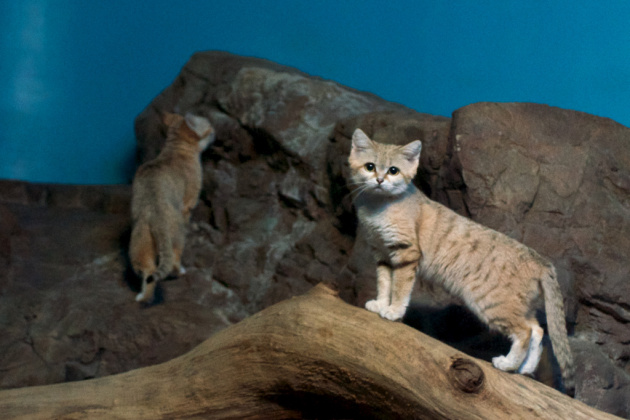by W. Angermeyer
This post was originally published on our Felids blog January 15, 2013
On our blog we often focus on felid conservation and research news occurring “in situ” or in the wild cat’s natural habitat. A good deal of conservation also occurs in captivity or “ex situ”. Who oversees the management of these captive conservation efforts? There are several well renowned organizations that collaborate and manage programs which focus on the conservation of many threatened and endangered species including felids.
In Part I of this topic, I would like to focus on the conservation efforts of the American Association of Zoos and Aquariums (AZA) which has a membership of 222 accredited zoos and aquariums throughout North America. Twenty years ago, AZA established the Species Survival Plan Program (SSP), which is a long-term plan involving conservation breeding, habitat preservation, public education, field conservation, and supportive research to ensure survival for many of the planet’s threatened and endangered species.
Currently, AZA members are involved in 319 SSPs working on behalf of 590 species. Each SSP Program is managed by a corresponding Taxon Advisory Groups (TAG) within AZA. The TAG is responsible for developing a comprehensive population Studbook and a Breeding and Transfer Plan which identifies population management goals to ensure the sustainability of a healthy, genetically diverse, and demographically varied population. The TAGs are in turn managed by the Wildlife Conservation and Management Committee. Are you confused yet?

The AZA Felid TAG is a committee of advisors with expertise in issues relating to wild cats. These advisors hold regular meetings attended by people from both AZA-member institutions and the private sector who have an interest in felids. The Felid TAG provides a forum for discussing husbandry, veterinary, ethical, and other issues that apply to the wild cats housed in AZA-member institutions. TAG advisors also examine animal management techniques based on scientific studies and assist SSP coordinators in developing animal care manuals to present best practices for the care and welfare of felid species. TAGs also promote cooperation and sharing of information between AZA and other regional and international conservation programs.
One important role of the Felid TAG is to recommend the wild cat species managed by studbooks, SSPs, and other zoo-based programs through the regional collection planning (RCP) process. The Felid RCP helps animal managers determine which species are most in need of zoo-based conservation programs; establish priorities for management, research and conservation; and recruit qualified individuals to carry out these activities. In developing the RCP, the TAG takes into account both the limited amount of enclosure space available and the need to maintain animals in populations large enough to ensure their long-term genetic viability and demographic stability. They also consider the potential of selected species to contribute to conservation through education, scientific research, fund-raising to support field conservation, and managed breeding for potential reintroduction. The goal of this careful planning process is that each cat species and individual animal held at AZA zoos has a defined conservation or education purpose.

Species may be added or taken off the TAG managed list periodically, based on what the needs of that species are and how likely it is that zoos can manage and conserve them effectively. The current AZA Felid Species Survival Plans and Population Management Plans include:
SSPs: Amur Leopard, Black-footed Cat, Cheetah, Clouded Leopard, Fishing Cat, Jaguar, Lion, Ocelot, Sand Cat, Snow Leopard, Tiger
PMPs: Canada Lynx, Caracal, Pallas Cat, Puma, Serval
For more information on the Felid Tag and participating institutions, please visit the National Zoo’s web-site.